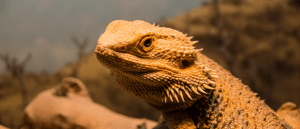
BioTechniques News
Aisha Al-Janabi

Why are some people more prone to anxiety than others? Researchers have shed light on the evolution of brain mechanisms underlying anxiety.
The evolutionary origins of monoamine neurotransmitters like serotonin and dopamine date back to the dawn of metazoans – any creature with a body composed of differentiated cells that form organs and tissues. However, genetic variations of related genes mean that the impact of these neurotransmitters has gradually become less set in stone in humans. Researchers have investigated just how the human-specific mutations function in the brain and how this underlies anxiety.
Previous research, led by Daiki Sato and Masakado Kawata, has demonstrated that the vesicular monoamine transporter 1 (VMAT1) gene has evolved via natural selection in humans. The VMAT1 gene, is responsible for transporting neurotransmitters to secretory vesicles in neurons and secretory cells.
Specifically, the team found that the 136th amino acid locus of the VMAT1 gene has evolved from asparagine (Asn) to threonine (Thr). In addition, a new allele (isoleucine, Ile) has arisen and has increased in numbers across the globe. It has been thought by researchers that lucky individuals harboring the Ile genotype are less prone to anxiety and depression than those with the Thr genotype.
 No, we don’t have a ‘lizard brain’
No, we don’t have a ‘lizard brain’
Researchers at the Max Planck Institute for Brain Research used comparative single-cell transcriptomics to study vertebrate brain evolution and put the idea of a ‘lizard brain’ to rest.
What is less known, is exactly how these different genotypes affect brain function. In the current study, Sato, Kawata and their colleagues used mice to pinpoint how each genetic variation affects brain function and ultimately leads to neuropsychiatric symptoms.
Using genome editing technology, the team prepared Vmat1 gene-edited mice in which the 136th amino acid locus was replaced with the human genotype (Thr or Ile). They then compared behavior, gene expression and neural activity among the genotypes.
Sato, Kawata and colleagues observed that the Ile-type mice had altered post-synaptic gene expression and neural activity in the amygdala, a brain region that plays a role in emotional regulation. The Ile-type mice also displayed lower levels of anxiety-like behaviors, a result similar to that seen in human studies.
Importantly, this study has revealed more details about the functional role and molecular mechanisms of the VMAT1 gene in the central nervous system. The results also add to a limited body of research that utilizes genome-editing technology to study the effects of single amino-acid substitutions under natural selection during human evolution.
What’s more, the study may help to unravel the pathogenic mechanisms of neuropsychiatric disorders like anxiety and depression and emphasizes the importance of human-specific variants in the regulatory circuits of neurotransmitters involved in our cognition and emotions.
The post How did anxiety develop during human evolution? appeared first on BioTechniques.
Full BioTechniques Article here
Powered by WPeMatico
